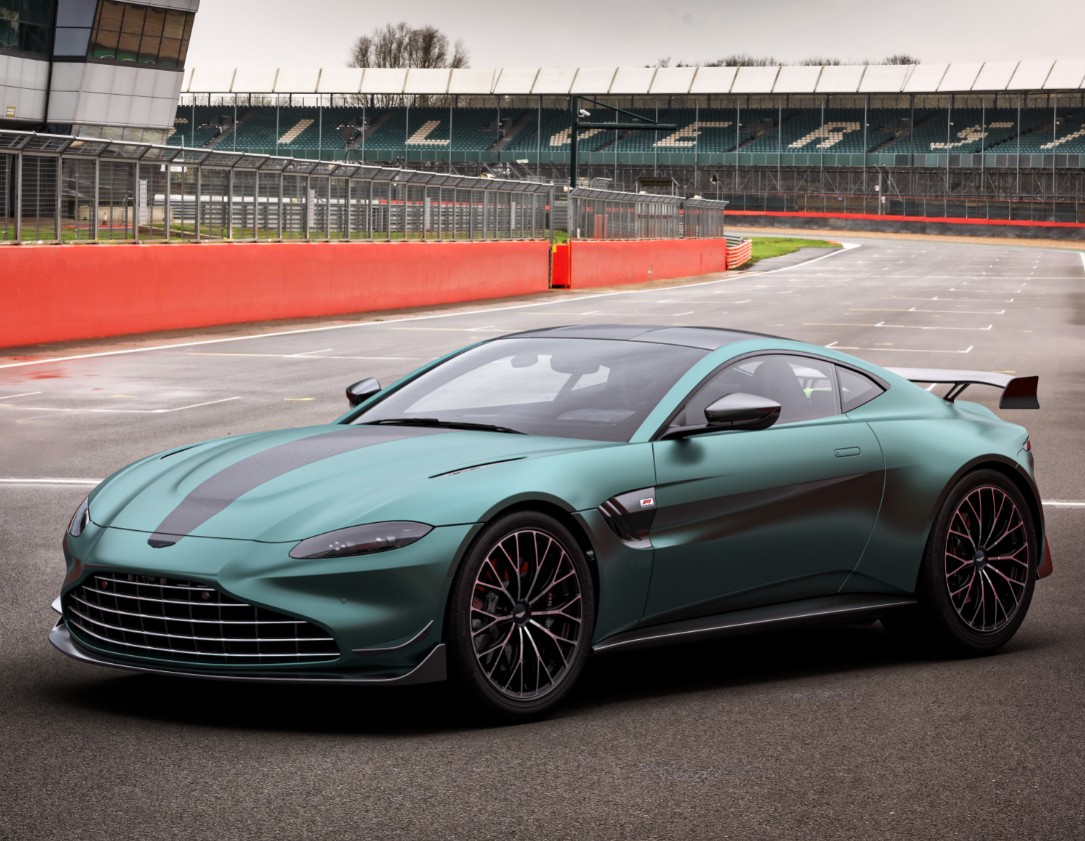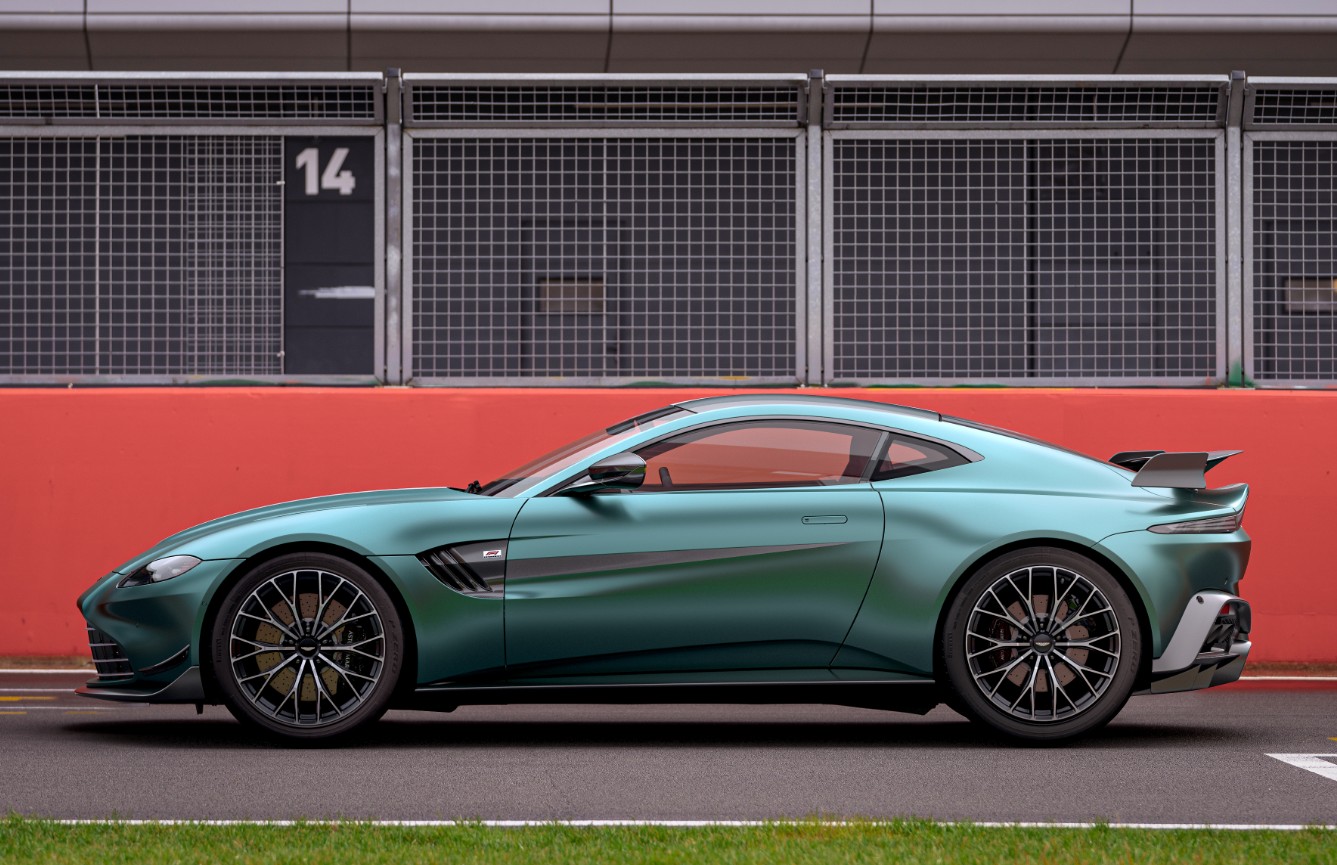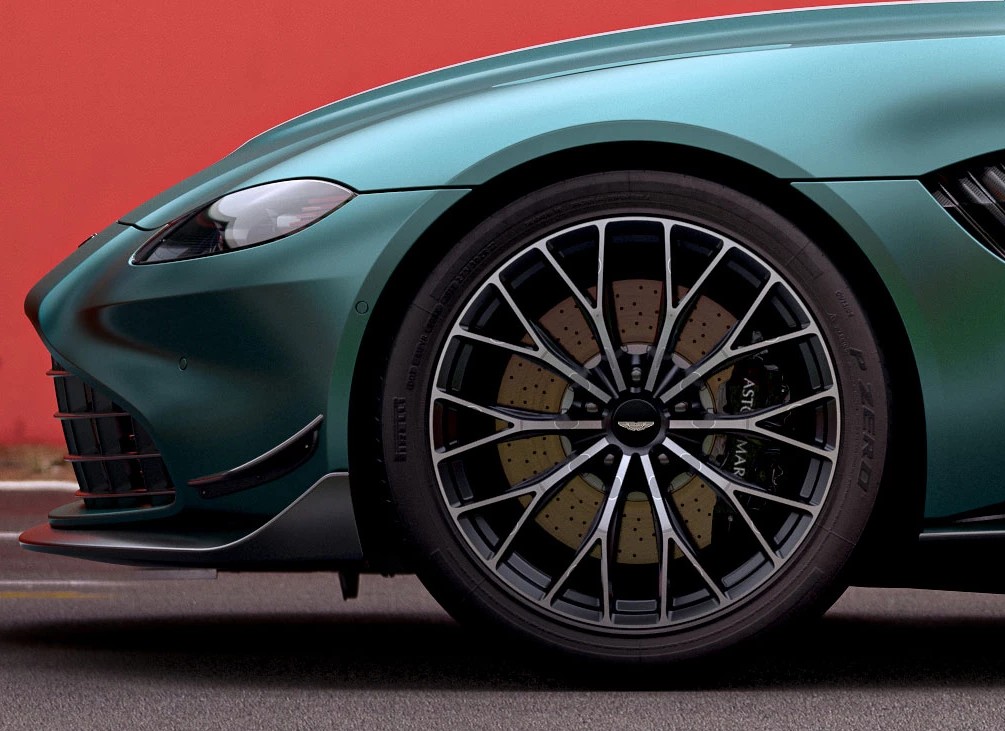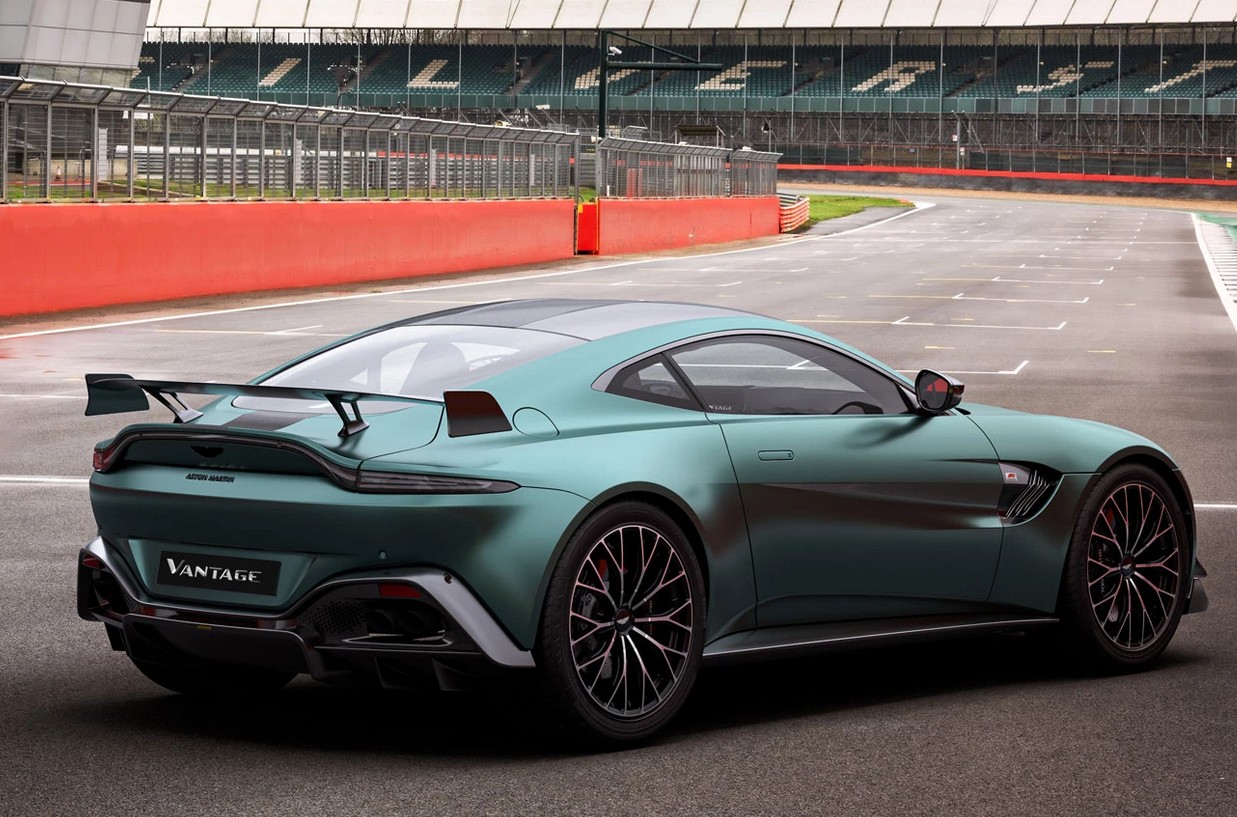
The new Aston Martin Vantage F1 is a race car for the road, the most extreme variant of the Vantage series ever. The F1 has been launched to celebrate Aston Martin’s return the the Formula 1 as a full factory team, with drivers Lawrence Stroll and Sebastian Vettel. Aston Martin also supplies the pace car and the medical car for this year’s Formula 1 season.

The Vantage F1 is fitted with a stiffened chassis, race-ca style suspension, an extended body kit, and specially designed 21 inch alloy wheels. Even more eye catching is the new aero kit, with a front slitter, side sills, dive planes, a diffuser, and a large rear wing. Aston Martin claims that the Vantage F1 generates 200 kilo more downforce at top speed than the standard Vantage. The F1 is powered by a slightly tuned variant of the 4.0 liter twin-turbocharged V8 engine, with an output of 527 hp and 685 Nm. The car’s body is made of aluminum with a carbon fiber roof, for a decent dry weight of 1570 kilo. The abundant power and relatively low weight propels the F1 from 0 to 100 in 3.5 seconds and it tops out at 314 kilometers per hour.

Unlike most recent super cars, the Aston Martin Vantage F1 doesn’t have carbon ceramic disc brakes but good old cast iron brake discs. At the front, it has ventilated two-piece cast iron disc brakes with a 400 millimeter diameter. At the rear, the Aston has ventilated co-cast iron brake discs with a diameter of 360 millimeter. The brakes are made of a special compound with a high-carbon content, making them stronger and more heat-resistant than standard brake discs, while being considerably cheaper and easier to maintain then carbon ceramic discs. The Vantage F1 is equipped with several electronic brake-assistance systems, including Emergency Brake Assist (EBA), Hydraulic Brake Assist (HBA), and Electronic Brakeforce Distribution (EBD).

The F1 in British Racing Green on the Silverstone F1 circuit. Expect more Aston Martin F1 specials if the racing team’s efforts are successful.